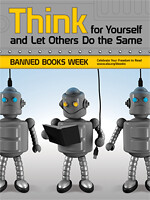Waking Up In America
Natalie Goldberg
"People would rather read about how to become a writer than read the actual products of writing: poems, novels, short stories," says Natalie Goldberg in the opening chapter of this, her third and, I think best, memoir. Her first two bestsellers, Writing Down the Bones and Wild Mind, are disguised as how to books for aspiring writers, so she should know what she is talking about when she says this, laughing all the way to the bank. Perhaps reading about how to write is related to watching cooking shows on television while ordering takeout. The idea of cooking, the idea of writing are appealing. The hard work, not so much.
In Long Quiet Highway Goldberg goes into much more detail about her journey from her Long Island childhood to a career as a writing coach in New Mexico and as a student of Zen Buddhism in, of all places, Minneapolis. She talks about her writing practice and teaching methods without prescribing them and ties her methods in to her meditation practice and study with Dainin Katagiri Roshi at the Minnesota Zen Meditation Center. |
There is a great contrast between Goldberg's exposition of the practice and the benefits of Zen meditation and the "ancient secrets" that Dan Brown describes in his novel The Lost Symbol. Granted, Brown's book is fiction and deals with the Judeo Christian tradition, yet when Goldberg describes her exploration of Judaism, she finds a direct similarity to what she was taught by Katagiri, not some kabbalistic mumbo jumbo. The inner peace and sense of belonging in the world, the rightness, that she discovers in the zendo, is the same thing that she finds in the ritual practices of Judaism. Neither is easy, though. Both take a lot of work.
Just do your practice for it's own sake, just be who you are with no expectation of reward, these are the lessons Goldberg brings to her book. The hard work, to her, is it's own reward. Getting up a four in the morning to walk six blocks to the Zen center in mid Minnesota winter and sit on a wood floor. This is her work and she learns to love it. Sitting down every day for several hours with a pen and a notebook and putting words down on the pages without pre-judgment is also her work. Somehow Goldberg makes books happen this way but you'll need to read the other two books to learn how.










